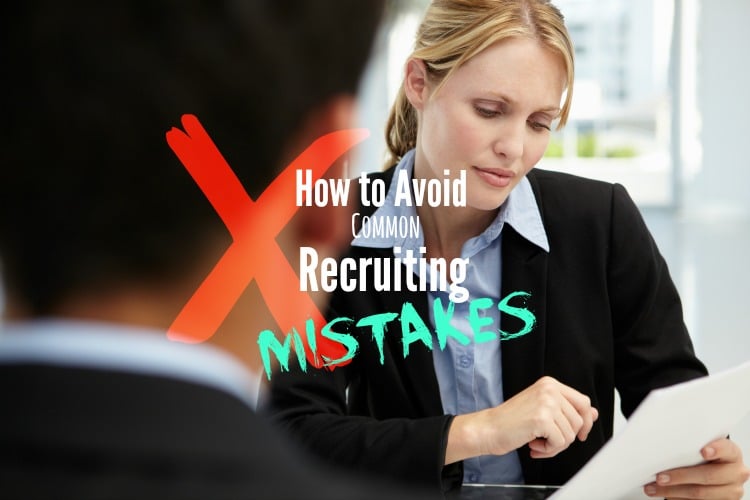
Successful recruitment is an important part of helping your business thrive, but it’s not an exact science. Even some hiring managers with the best of intentions make costly and frustrating recruiting mistakes. Keep reading to learn about some of the most common recruiting mistakes and how to make sure you don’t make the same blunders.
1. Making Judgments Too Quickly Based on Social Media Profiles
Although it’s true social media can be extremely helpful in finding candidates, the method is not without limitations. Some recruiters make snap judgments based on social media profile information. Don’t forget, social media profiles are not resumes, and it’s often impossible for experienced applicants to convey the full extent of their knowledge in that limited format.
2. Failing to Explain the Company’s Culture
Think back to some of the jobs you’ve voluntarily left, and there’s a good chance those departures were due to the fact you didn’t fit into the company culture, rather than a lack of skills. Thoroughly explain the values your company is built on, so there’s a better chance recruits can decide if they align with those values.
3. Taking Too Long to Reach a Decision
Efficiency is key in the recruitment process. It adds momentum to your hiring objectives so you don’t get distracted. More importantly, a quick hiring decision reduces the chances your chosen candidates will take better offers before you get back to them with job offers.
4. Asking the Wrong Interview Questions
If you’re really in a pinch to boost the size of your team, you may be content to ask some very basic interview questions. It’s much more to your advantage to ask questions that truly fit your organization, rather than settling on bland queries that don’t get your applicants thinking.
5. Not Offering an Attractive Benefits Package
It’s possible you’re having trouble getting the best and brightest candidates because the benefits package you offer is not appealing compared to that of other companies in your industry. A retirement plan and health insurance are standard perks, but think about offering access to career development programs, the ability to work from home periodically, or even a gym membership.
6. Overlooking Contract Job Offers and Internships
Both contract roles and internships can let you increase the size of your workforce while simultaneously vetting people who may eventually get offered full-time positions. If you’re not actively considering both of these options, it’s time to at least entertain the possibility of giving them a try.
7. Discussing the Position Solely From Your Perspective
While talking about open positions, don’t just give information based on what the job description is and what kind of employee you hope will fill the role. It’s crucial to craft your pitch so it answers the “what’s in it for me?” question candidates are rightfully asking, even if they don’t say it out loud.
Put yourself in the shoes of an applicant and see if that helps you figure out whether you’re talking about your company and the position in language that makes sense to them.
Recruiting isn’t easy, but it’s something you’ll need to learn to do well for the sake of your company’s prosperity. In addition to becoming familiar with some common but avoidable recruiting mistakes, you may get helpful and fresh perspectives from people on your team who have been hired relatively recently. After all, you successfully recruited them, so there’s no harm in asking them if there were specific things you did during the recruitment process that helped solidify their decision to come on board.

